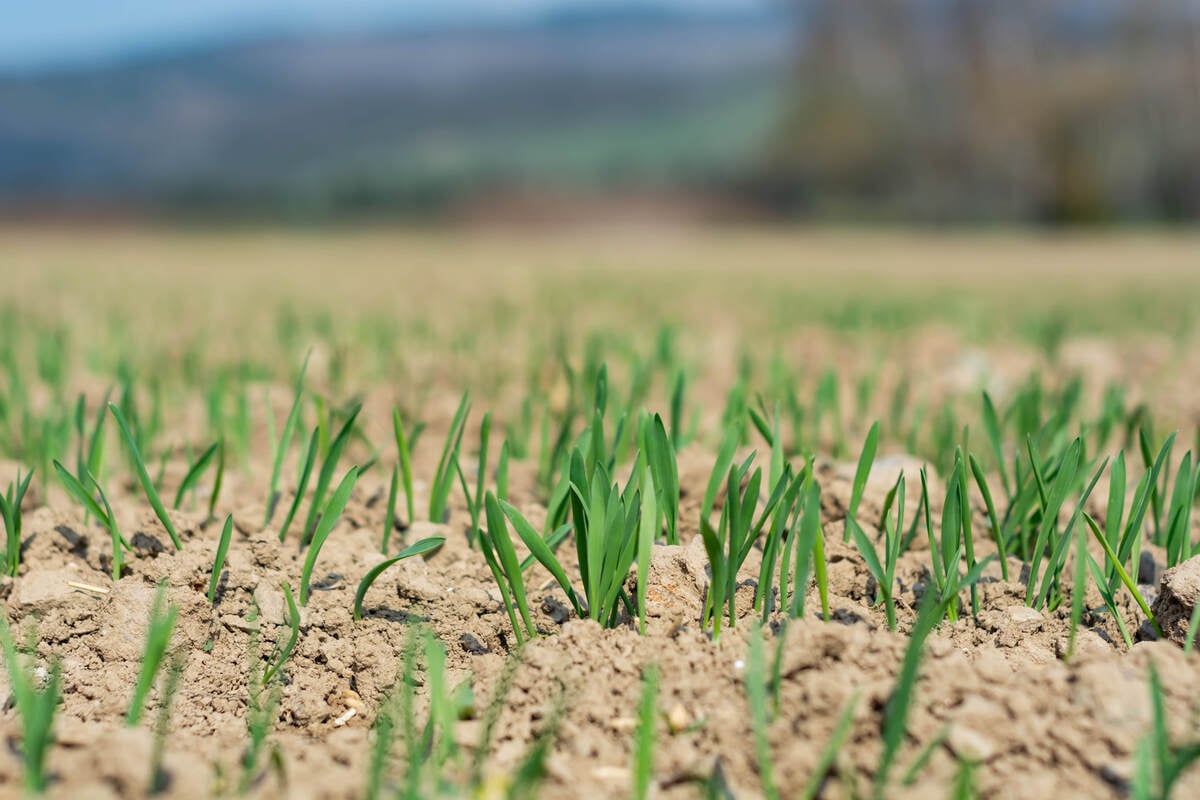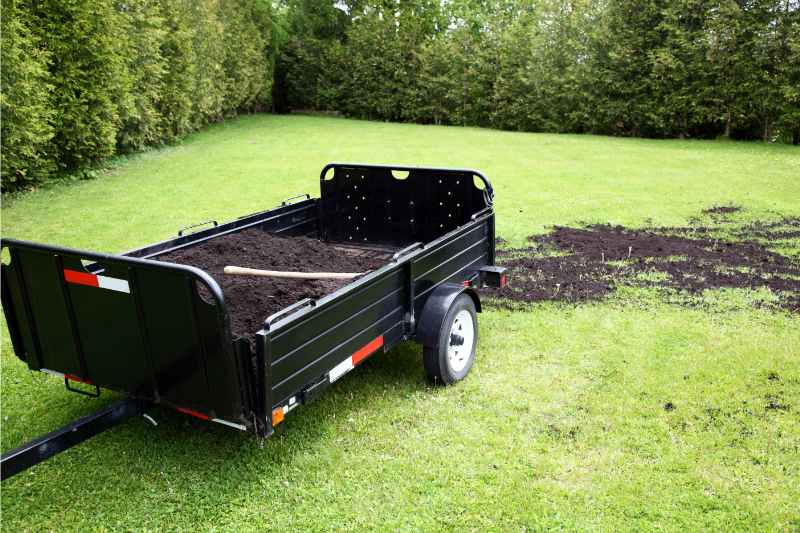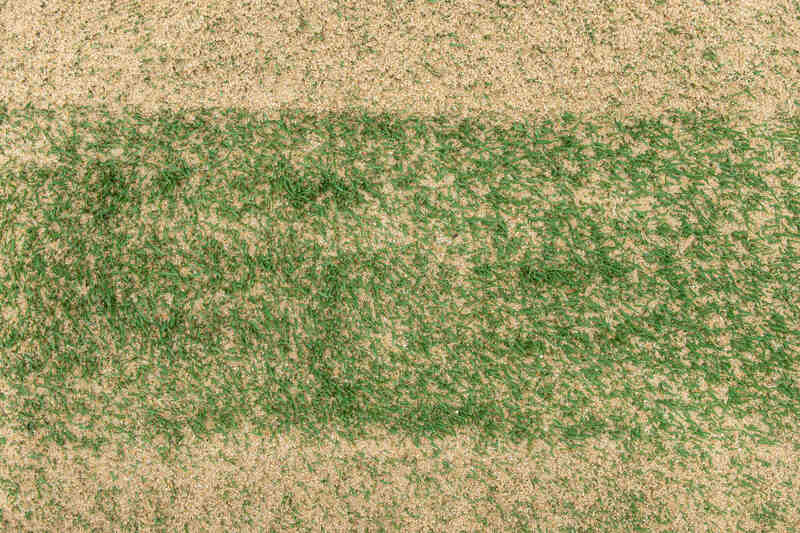
Upon first thought, it seems somewhat absurd to spread a layer of compost or sand over your grass. After all, dirt is supposed to be under the grass. This is what topdressing a lawn is, though, and knowing the benefits and how to do it is the first step in this organic lawn care strategy.
What is Topdressing a Lawn?
Topdressing a lawn is accomplished by spreading a thin layer of material, such as compost or sand, over the grass. This practice dates back to when golf was first invented in Scotland and is gaining popularity with homeowners transitioning to organic lawn care. In the present article, we go through the main benefits that adding topsoil to lawns can offer.
Benefits of Topdressing a Lawn
But why is it good to add soil to the lawn in the first place? When the soil under your grass starts to lose its oomph, or it’s a new lawn that isn’t doing well, pulling all of the grass up to amend it isn’t a feasible option. Topdressing is a simpler — albeit still challenging — way to see the following benefits in your lawn.
- Adds organic matter to the topsoil, improving poor soil by enhancing its productive properties
- Improves the soil structure, water holding capacity, and cation exchange capacity
- Builds up beneficial soil microbes
- Reduces thatch
- Smooths out uneven terrain from worm castings, freeze/thaw cycle, or water runoff
- Reduces the need for fertilizing
What Topdressing Material to Use

One of the first and most important steps is deciding what type of topdressing material you should use. To be effective and advantageous, it needs to be similar in texture to the underlying soil. According to the late James Beard, a leading authority on turfgrass, choosing the wrong material as a topper soil can create serious problems:
“The use of topdressing mixes containing textures drastically different from the underlying soil results in the development of a distinct layer that impairs air and water movement considerably and results in an overall reduction of turfgrass quality.”
He advises: “[O]ne of the most important considerations in topdressing is the use of a soil mixture of comparable texture and composition to the underlying soil.” The most common options for lawn topdressing are sand, topsoil similar to your existing soil type, high-quality compost, or a custom-blended mix of the materials.
- Sand: Used extensively on golf courses, primarily on man-made greens. It can also be used with heavy clay soils to improve drainage. Avoid using fine topdressing sand over coarse-textured soil. The best sand for topdressing your lawn is not lawn sand on its own, but a mix of 70% sand and 30% topdressing soil.
- Topsoil similar to original soil: Adding a topsoil similar to the existing soil structure is acceptable and will help smooth out the ground but doesn’t contain much organic material. The best lawn topsoil for you will depend on your soil’s original characteristics.
Topsoil for grass is a combination of clay, sand, decomposed plant matter, and other substances that compose soil. - Compost: Compost is the most recommended material to use, as long as it is finished and has few fillers. Topdressing lawns with compost adds valuable nutrients to your soil, and you can even make your own compost at home.
- Topdressing mix: It is common for homeowners to use a mix of the above materials to create a cost-effective blend that is comparable to their existing soil. Most often, a blend of compost and either topsoil/sand is recommended.
Materials can be purchased from local nurseries, garden centers, and perhaps landscape or construction companies if you are looking for lawn topsoil or sand.
Tips for Topdressing Your Lawn

Topdressing your lawn can be a DIY project, but truthfully, it is a very labor-intensive endeavor. Some home improvement centers have motorized spreader machines available for rent which will reduce the labor but increase the cost.
- Routinely topdress: Topdressing regularly improves thatch breakdown and improves the soil. However, it does raise the grade of your yard. To ensure you don’t raise it too much, it’s best not to topdress your entire lawn routinely. Treat bare spots as needed and the entire lawn every few years.
- Topdress the lawn more often: A very light topdressing application can be completed more often if the amount added is shallow enough to be brushed into core aeration holes.
- Time according to your grass type: The best time to topdress a lawn depends on your type of grass. Topdress lawns in the spring for warm-season grasses and in the fall for cool-season grasses. This allows three or four mows before severe heat or cold sets in.
- Combine with other lawn maintenance practices: Combine topdressing with aeration to prevent soil compaction and overseeding to grow new grass. Keep in mind that the best topdressing for grass seed germination is rich in nutrients and peat-free.
If topdressing your lawn sounds like too big of a project to tackle yourself, some lawn care companies offer topdressing services to clients. It’s becoming a more popular service available because of demand but is still not widely available; it requires a lot of work with a small profit margin for companies.
How Much Material Will I Need to Topdress a Lawn?
The table below shows how much material you will need to topdress your lawn to different depths. If you have a particularly problematic lawn, it may take several applications to introduce enough material to achieve your goal.
| Volume of Soil Needed to Topdress 1,000 Square Feet | |
|---|---|
| Depth of topdressing (inches) | Volume of soil required (cubic yards) |
| 1/8 inch | 0.40 |
| 1/4 inch | 0.77 |
| 3/8 inch | 1.14 |
| 1/2 inch | 1.54 |
| 5/8 inch | 1.91 |
| 3/4 inch | 2.31 |
| Source: James Beard, "Turfrass: Science and Culture" | |
How to Topdress Your Lawn in 7 Steps
As a DIY project, the process isn’t difficult. It is tedious and labor-intensive, however. Follow these steps on how to spread topsoil over your lawn:
- Check the soil pH and adjust accordingly if it is out of range.
- Open up the thatch layer with a power rake or aerator to create channels for the topdressing material to penetrate the surface.
- Mow grass as short as possible without stressing it to the point of damage.
- Remove grass clippings, dethatching debris, or plugs of soil from aerating.
- Spread grass seed if overseeding.
- Add the topsoil to the lawn. The best way to spread topsoil on your lawn is by using your shovel. Shovel out a small amount of your material, working in small areas, a few square feet at a time. “Fling” the materials with a smooth, sweeping motion similar to hitting a hockey puck. Spread the topdressing over the lawn to a depth of ⅛ to ½ inch.
- Gently rake it in or water the lawn well. That moves material down to the soil surface.
Once you have successfully topdressed your yard, it’s time to be patient, as it can take a few seasons to see the full results. If done correctly, you will see improvements in drainage and water retention quickly, but it takes time for the microbes to start working and the organic matter to begin breaking down.
Pro tip: Fertile, rapidly growing turf and lawns that are more prone to create thatch build-up may require heavier topdressing rates.
FAQ About Topdressing
Should you Fertilize Before Topdressing?
It’s optional, but yes, you can fertilize before topdressing a lawn. If you decide to aerate, the fertilizer should be put down after you aerate and before you place the topdressing material. This extra fertilizer boost will help increase the turf’s growth and health.
Do you Water Your Lawn After Topdressing?
You should water your lawn after topdressing as this helps boost the terrain. Plants and grass can get stressed when going through a new change, and adding water afterward helps with the transition.
When Can I Mow After Topdressing?
Do not mow directly after topdressing. It is best to leave the lawn alone for a week to 10 days before cutting the grass.
What is the Difference Between Dirt and Soil?
The difference between dirt and soil is that dirt doesn’t contain the living matter, organisms, humus, fungi, and nutrients found in soil. Dirt is made of silt, clay, and sand. Basically, dirt is a part of the soil that contains minerals but not live organic matter.
If your soil is poor and you basically have a dirt lawn instead of a healthy lawn, you can improve sandy soil and other unbalanced soils with soil amendments like compost or mulch. To learn more about topdressing a sandy lawn, check out our article How to Amend Sandy Soil for pro tips and information.
Improving Your Healthy Lawn
Topdressing can be a lot of work. But it provides a healthy and organic way to make your lawn look like the one in your dreams. All it takes is determination and a little bit of elbow grease.
Even with happy soil and a healthy lawn, your yard may still need an extra hand. For help topdressing your lawn, check out your local lawn care pros that offer topdressing services.
LawnStarter writer Abigail Evans updated this article.
Main Image Credit: Adobe Stock